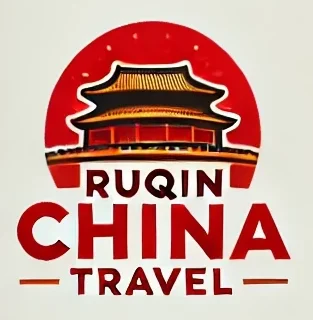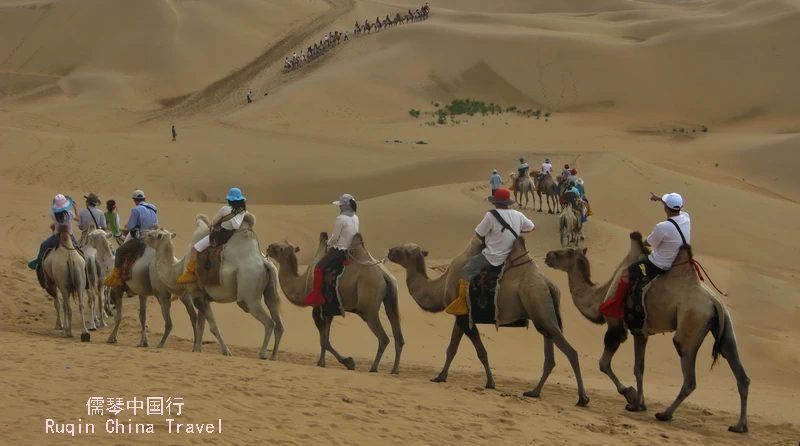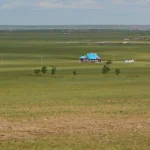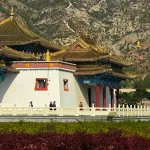Welcome to Baotou, Inner Mongolia! Often overlooked by international travelers, Baotou is a fascinating city where the spirit of the grasslands meets industrial power and deep-rooted history. As one of Inner Mongolia’s key cities, it offers a unique blend of Mongolian culture, modern industry, and ancient heritage — a mix that’s rare to find in one place.
This travel guide will help you plan the perfect independent trip to Baotou. From the best time to visit and how to get around, to must-see attractions, local food, and cultural highlights — we’ve got you covered. Whether you’re drawn to the sweeping landscapes of the grasslands or curious about Mongolian customs and traditions, Baotou promises a journey that’s both eye-opening and unforgettable.
So, get ready to explore the charm of this “Steel City on the Steppe” — and discover a side of China most tourists never see.
1. Baotou Travel Overview: Where Grasslands Meet Steel
Baotou means “Place with Deer” in Mongolian, so people often call it the “Deer City.” It sits in central Inner Mongolia and plays a key role in northern China’s industry. Yet, it also celebrates its nomadic roots and cultural diversity.
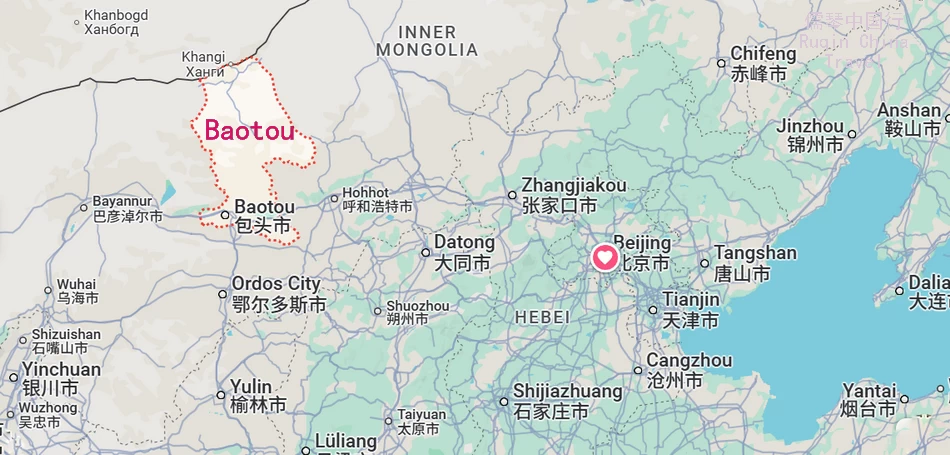
Here, you’ll find a rare mix. In one day, you can visit a Tibetan monastery, relax in city grasslands, and enjoy a hearty Mongolian meal. This balance of tradition and modern life makes Baotou truly unique.
Geography adds to its charm. The city borders the Yellow River to the south and stretches toward vast grasslands in the north. It’s the perfect gateway to explore both nature and culture.
For first-time visitors, a 4–5 day trip is ideal. With 2–3 days, focus on city landmarks and nearby steppe tours. If you stay longer, head out to the Yellow River, deserts, or even more remote prairies.
The best times to visit are spring (May–June) and fall (September–October). Summer brings colorful festivals, while winter offers snowy views and warm stays in traditional yurts.
Baotou welcomes international visitors. Many places offer basic English support. Still, knowing a few local greetings — like “Sain baina uu” (hello in Mongolian) — will make your trip more fun and friendly.
2. Getting to Baotou and Getting Around the City
Most international travelers reach Baotou by connecting through major Chinese cities like Beijing, Shanghai, or Guangzhou. Baotou Donghe Airport (BAV) is a key hub in western Inner Mongolia. It offers domestic flights to cities like Beijing (1.5 hrs), Shanghai (2.5 hrs), Guangzhou (3 hrs), and Hohhot (40 mins).
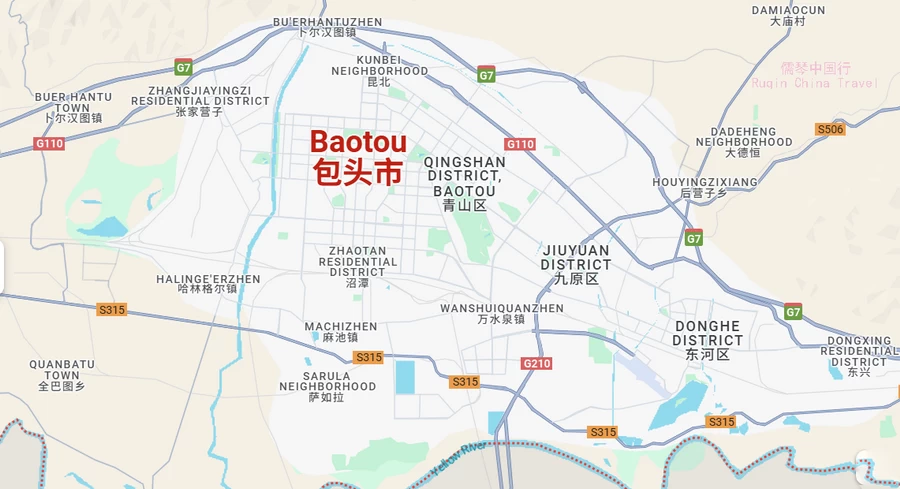
The airport sits about 16 km from downtown. You have several transport options:
- Taxi: The fastest choice. A 30–40 minute ride costs ¥50–70. Use the official taxi queue and insist on using the meter.
- Airport Shuttle: Budget-friendly at just ¥15. It runs to Baotou Railway Station in about 50 minutes.
- Ride-hailing: The DiDi app (International version) offers clear pricing and English support.
Coming by land? You can enter from Mongolia via the Ulaanbaatar–Erenhot train route, then continue to Baotou by bus or train (8–10 hours).
Getting around Baotou is simple:
- Buses: Cheap (¥1–2) and extensive. Use Baidu Maps or ask hotel staff to write down your destination in Chinese.
- Taxis & DiDi: Taxis start at ¥8. DiDi is easier for non-Chinese speakers and accepts foreign cards.
- Shared Bikes & Scooters: Great for short rides. Download HelloBike or Meituan.
- Private Car Hire: Ideal for remote spots like the grasslands. Hotels or agencies can arrange it for ¥500–800/day.
Travel Tips:
Plan ahead. Attractions are spread out, and traffic peaks from 7:30–9:00 and 17:00–19:00. For remote grassland trips, book transport early. Always keep your hotel’s name or address handy for easy navigation.
3. Top Attractions in Baotou: From Grasslands to Heritage Sites
Baotou offers a diverse mix of natural beauty, history, and culture. From sweeping grasslands to Tibetan temples and wetlands, there’s plenty to explore.
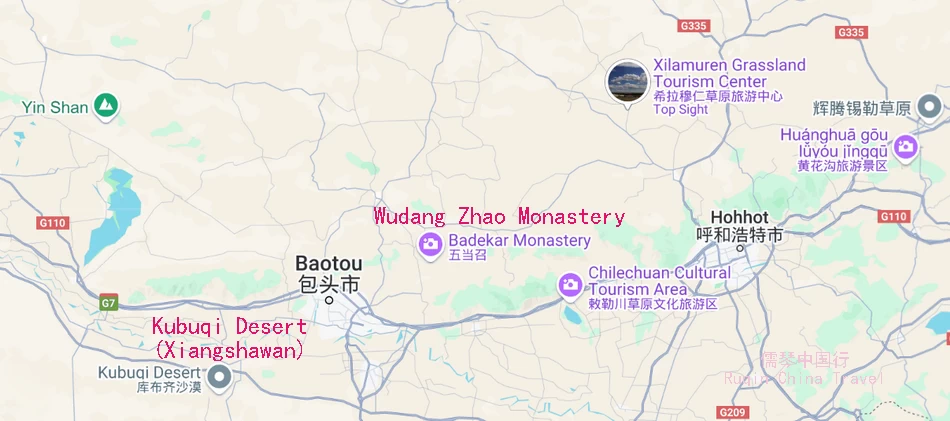
Nature & Grassland Adventures
Xilamuren Grassland 希拉穆仁草原
Located 90 km from the city, this is Baotou’s most famous grassland. You can ride horses, watch Mongolian wrestling, enjoy a bonfire night, and sleep in a traditional yurt under starry skies. Don’t miss the roast lamb and milk tea. Best visited from June to September, and plan to stay 1–2 days.
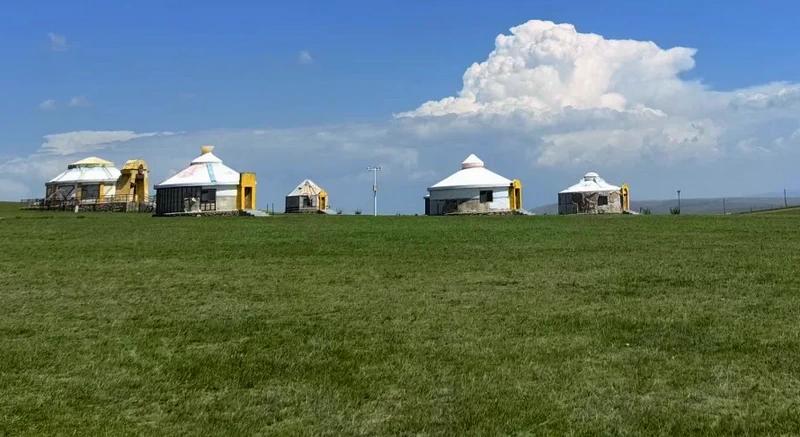
Saihantala Urban Grassland 赛汗塔拉城中草原
This rare grassland park lies in the city center. Walk or bike along wooden paths, watch herds graze, and learn about Mongolian rituals at the sacred cairn. Free to enter and ideal for a half-day visit.
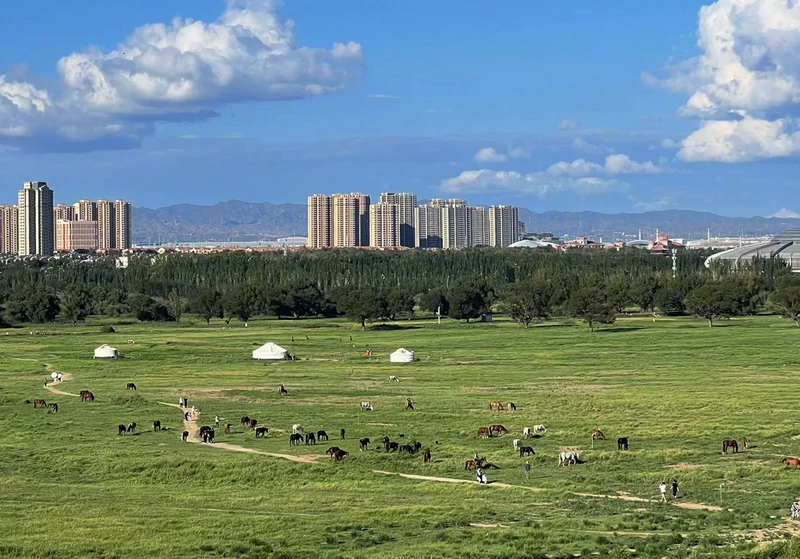
Nanhai Wetland Park 南海湿地公园
The largest wetland ecosystem in Baotou and an important stopover site for migratory birds. Perfect for birdwatchers. Take a boat ride, stroll the boardwalk, or snack on fried pastries and lamb stew by the lake. Spring and autumn are best.
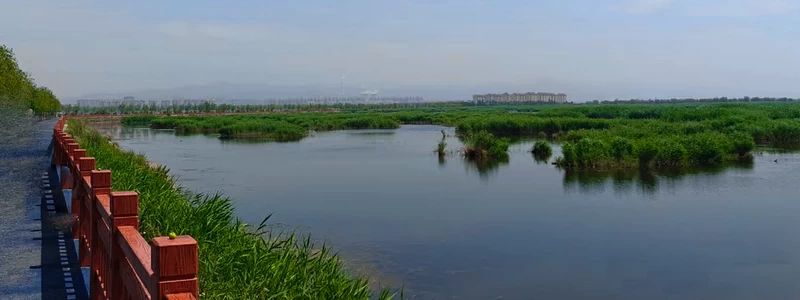
Cultural Highlights
Wudang Zhao Monastery 五当召
Often called the “Potala Palace of the Grasslands,” this stunning Tibetan monastery shines with golden rooftops. Catch a monk chanting ceremony if you’re lucky. Entry: ¥50.

Old Baotou Historic Street 老包头走西口历史文化街区
Stroll past Qing-era houses, sip tea in traditional teahouses, and enjoy folk opera. Especially lively during Chinese New Year.
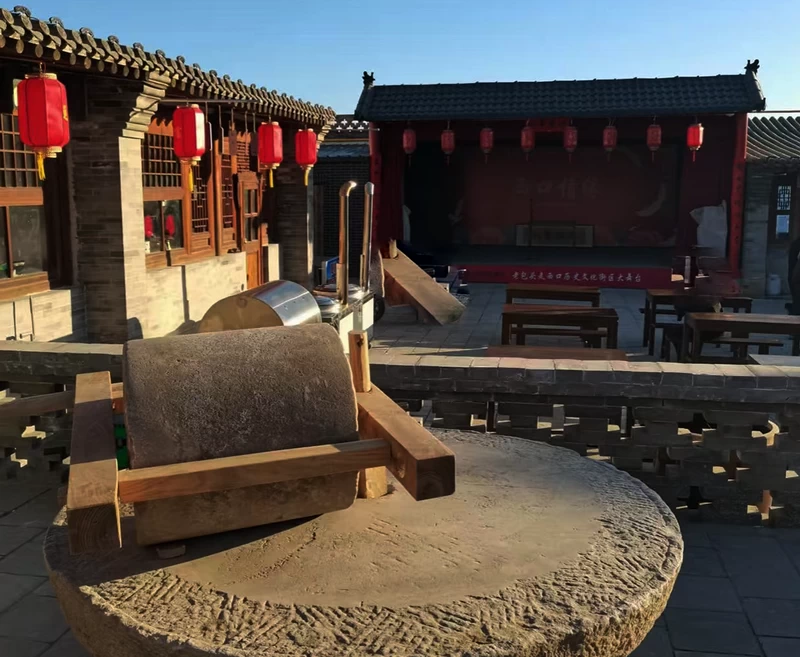
Meidaizhao Monastery 美岱召
This temple blends Han, Mongolian, and Tibetan architecture. Explore murals and stories of local legends. Entry: ¥30.
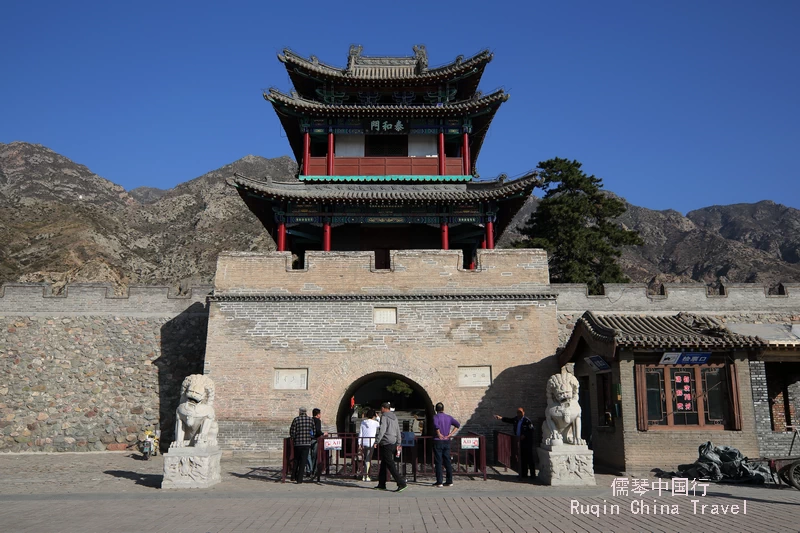
Modern & Unique Spots
Northern Weaponry Park 北方兵器城
Military fans will love this place. Get up close to tanks and fighter jets or try a shooting simulator. Great for families.
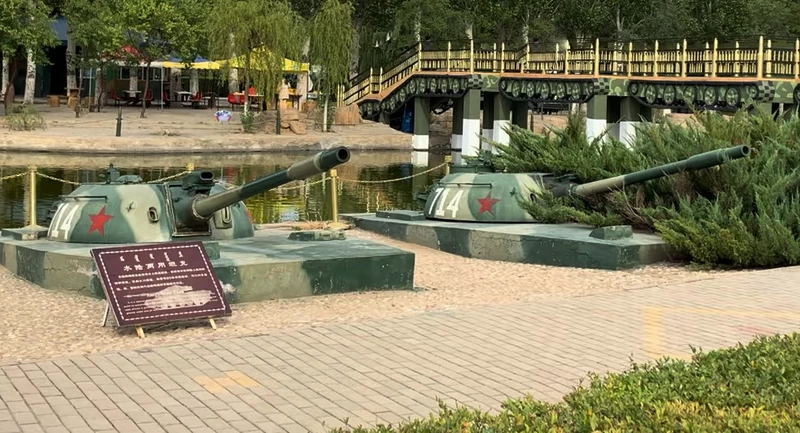
Kubuqi Desert (Xiangshawan) 库布其沙漠(响沙湾)
Though 3 hours away, this desert offers camel rides, sandboarding, and starry skies. It’s best in spring or autumn. Consider an overnight stay.
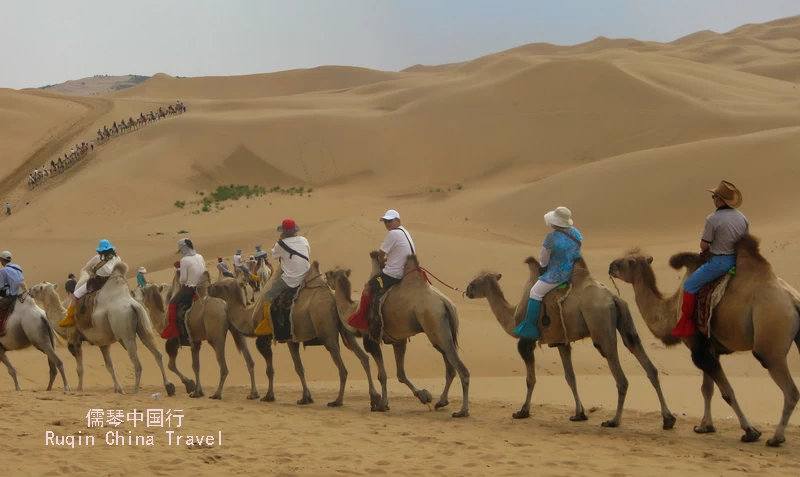
Baotou Museum 包头博物馆
A great intro to the region’s history, from ancient petroglyphs to Mongolian life. Free entry and well-organized.
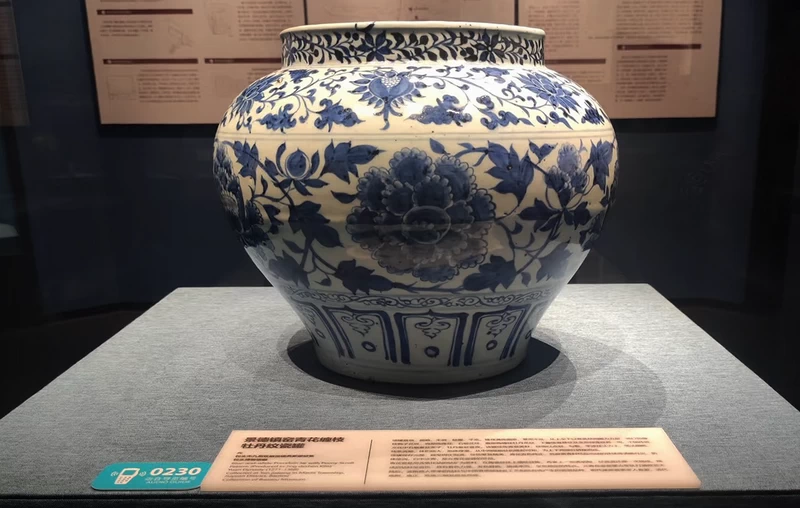
4. Baotou Food Guide: From Mongolian Feasts to Street Snacks
Baotou’s food scene blends Mongolian, Han, and Hui traditions into a rich, flavorful experience. For travelers, trying the local dishes is the fastest way to understand the city’s soul.
Mongolian Must-Trys
Start with roast whole lamb—the ultimate gesture of Mongolian hospitality. Enjoy it with milk tea and horse milk wine at grassland resorts like Xilamuren (pre-booking needed).
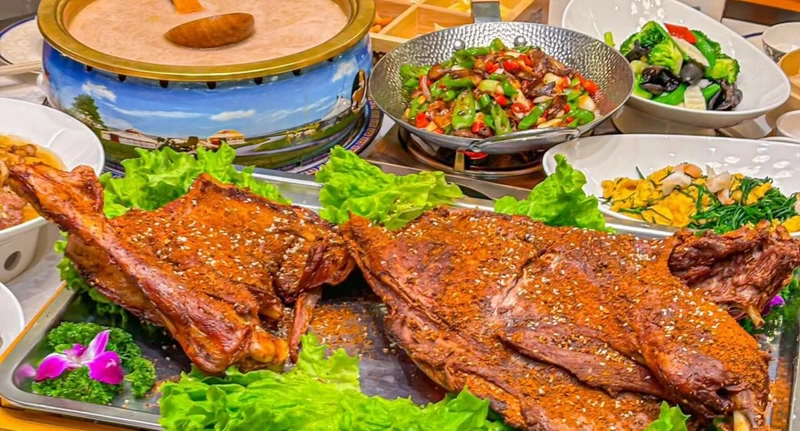
Next, try hand-grabbed lamb (shǒu bǎ ròu). It’s boiled with just salt and dipped in wild chive sauce. Locals eat it by hand, straight from the bone.
Don’t miss braised lamb bones at the Tao Ji night market in Donghe District—perfect with local beer.
Local Snacks and Staples
Baotou shaomai is a must. These thin-skinned dumplings burst with juicy lamb and scallion. Enjoy them with brick tea for breakfast.
Oat noodles (yóu miàn) are another favorite. Stir-fried or served in lamb broth, they’re hearty and healthy.
In spring, look for wild sand scallion buns—lightly spicy and fragrant.
Where to Eat
For atmosphere, visit Ma Shoujiang Restaurant for halal dishes in a historic courtyard. Love street food? Head to Old Baotou Historic Street during festival season. Try local fish, lamb dishes, and toast tea with friendly locals.
5. Cultural Experiences in Baotou: Live the Local Life
Baotou isn’t just about sightseeing and food — it’s about truly feeling the culture. From traditional crafts to festive events, the city offers immersive experiences that connect you with its spirit.
Hands-On Activities
Try Mongolian calligraphy at Saihantala Grassland or near Wudang Zhao. Learn the elegant vertical script and write your name with a brush. It’s a creative keepsake — just like when American teacher Justin made headlines writing “福” in Old Baotou.
Next, dress up in a Mongolian deel. Snap photos in traditional robes and headpieces, learning the meaning behind every color and pattern. Grassland resorts and the Baotou Museum offer costume rentals.
Love music? Join a horsehead fiddle (morin khuur) session. Hear its haunting sound, known as “the voice of the steppe,” and try a few notes yourself at a cultural center or bonfire night.
Festivals and Seasonal Fun
Visit Baotou’s Spring Festival Market in Old Town for international snacks, folk shows, and crafts. In summer, don’t miss the Naadam Festival on Xilamuren Grassland — enjoy wrestling, archery, and racing.
Finally, look up! Baotou’s grassland stargazing is magical, with stories of the stars passed down by Mongolian herders.
6. Travel Tips & Safety in Baotou
To make your Baotou trip smooth and stress-free, here are some key tips:
Language & Communication
Locals speak Mandarin; Mongolian is used in ethnic areas. English is limited, so use translation apps like Youdao or Google Translate (VPN needed in China). Learn simple phrases like “Nǐ hǎo” (hello) or “Sain baina uu” in Mongolian. Use hand gestures and keep communication simple.
Health & Safety
Drink bottled or boiled water. Ease into local foods like fatty lamb. Bring basic meds and sunblock (SPF 50+). In winter, dress warmly. For emergencies, dial 110 (police) or 120 (medical).
Money & Payments
Cash (CNY) is essential in rural areas. Use WeChat Pay or Alipay International in cities. Exchange money at banks, not hotels.
Connectivity
Hotels offer Wi-Fi. Buy a local SIM card (with passport) for easy data use. A VPN is needed for Instagram, Facebook, etc.
Respect & Culture
Remove shoes in yurts, avoid touching heads, and dress modestly at temples. Always accept items with both hands.
With a little preparation and an open mind, you’ll enjoy Baotou’s warm hospitality and rich culture. Safe travels!
7. Where to Stay in Baotou: From Budget Beds to Mongolian Yurts
Baotou offers a wide range of stays — from modern city hotels to traditional grassland yurts. No matter your budget or style, there’s a place for you.
City Hotels: Comfort & Convenience
Vienna International Hotel (Qingshan District) offers elegant European-style rooms with great city views. It’s near Wanda Plaza and full of dining options.
Price: ¥350–500/night
Best for: Families and mid-range travelers
Shell Hotel (near Baotou Railway Station) is budget-friendly, clean, and ideal for backpackers.
Price: ¥150–250/night
Best for: Young travelers and short stays
Cultural Stays: Sleep with Local Flavor
Xilamuren Grassland Yurts offer starry skies and Mongolian shows. Modern amenities meet traditional charm.
Price: ¥300–600/night (meals included)
Old Baotou Guesthouses in Donghe District sit inside historic homes. Walk to food streets and enjoy folk performances.
Price: ¥200–400/night
Tips for Travelers
Book early for summer. Bring warm clothes for yurts. Confirm payment types and bathroom setup. Use translation apps when needed. Wherever you stay, Baotou’s warmth and hospitality will make you feel right at home.
As American teacher Justin once said after living here for ten years, “Baotou is my second home.” It’s easy to see why. This city blends wild grasslands, rich traditions, and warm hospitality into an experience that’s truly one of a kind.
With the right preparation and an open mind, your journey to Baotou will be more than just a trip — it will be a story you’ll want to share. Embrace the culture, try something new, and don’t be afraid to connect with locals.
We hope this guide helps you explore Baotou with confidence and curiosity. Safe travels — and enjoy every moment in this steel city of the steppe!
